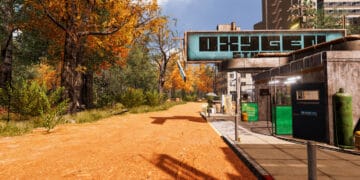“Where there’s smoke, there’s fire,” as the old axiom goes.
We’ve seen the smoke transform into a massive wildfire as Silicon Valley Bank collapsed this month.
Before we get into all of that mess, let me introduce you to a fellow named John Leonard Orr. He is the most prolific arsonist in U.S. history. At his peak in the 80s and 90s, he was known to be responsible for 2,000 fires in Northern California.
Orr developed a crude incendiary device made of five ingredients: a cigarette, a rubber band, a piece of paper, a matchbook, and a coin. He would affix the coin to the matchbook and paper, tie the rubber band around them, ignite the cigarette, and toss it wherever he wanted to set the blaze.
He was basically a sinister version of MacGyver…
When the cigarette burned down to the matchbook, it would spark the matches and ignite anything nearby. Orr was shrewd enough to place his devices in places known to be very flammable.
This included hardware stores, craft boutiques, cars, and… most prominently, dry, grassy hillsides. In California, the “Devil Winds” from the Santa Anas can turn the entire region into a tinderbox. It’s perhaps the most destructive combination for an arsonist, and Orr used that to his twisted advantage hundreds of times.
Orr's fires caused millions of dollars in damages and cost four people their lives.
Oh, and did I mention he was a firefighter? In fact, many of the fires he set were on the way to or from an arson investigators convention. I can imagine him laughing maniacally at the irony.
A different kind of brushfire has engulfed California — and a different kind of arsonist is on the loose — causing billions of dollars in damage in its wake…
Fire in the Hole!
The recent bank meltdown is a similar situation to Mr. Orr's: the Fed was supposed to be the firefighter, but their rate hikes became the incendiary device. Regional banks provided the dry brushfire.
Both sides are complicit in different ways…
By continuing to raise interest rates at a rapid pace – in order to combat inflation quickly after ignoring it for far too long – the Fed put over-leveraged banks in a dangerous situation.
Banks like Silicon Valley Bank had been so used to the dry powder of zero interest rates that they weren’t properly prepared when the sparks of those interest rate hikes came fast and furious. By the time the Fed warned them that they were in a dangerous position, it seemed far too late.
Way back in 2021, the Fed determined that there were “serious weaknesses” in how SVB was handling key risks. The Federal Reserve Bank of San Francisco went so far as to issue six citations to the bank. The warnings (marked “matters requiring attention”, which doesn’t even sound dire enough to open an e-mail) indicated that SVB didn’t have enough cash on hand in the event of any disruptions (that can now officially be filed in the “no shit Sherlock” department).
But SVB didn’t fix anything.
So in July 2022, the bank got another, more careful look. It failed again and was placed under restrictions that handcuffed some of its ability to further grow through acquisitions. That was an obvious first step that could have dampened the embers if implemented sooner.
The San Francisco Fed met with senior leaders at SVB again in the fall to discuss the bank’s ability to access enough cash if a crisis were to hit as interest rates continued to rise.
None of those warnings seemed to do a damn bit of good. Finally, earlier this year, the Fed put Silicon Valley Bank in what the Fed calls a “horizontal review” risk management. By that point, the bank was toast.
It’s the equivalent of attaching the fire hose to the hydrant after the building has already burned down.
There is plenty of blame to go around…
The Fed should have begun raising interest rates at a slow and steady pace long before having to repeatedly hike them month after month. Today the rates are hovering around 4.5% – the highest level in fifteen years. And they are poised to go higher, starting later today.
Banks like SVB – and other failed banks like First Republic and Signature Bank – should have avoided their best Icarus impressions and made the proper contingencies against what seemed like a foregone conclusion: eventual rate hikes.
But what happens now?
Bailouts.
Bail, Bail, Bail!
President Biden announced that the federal government would retroactively designate SVB and Signature Bank as “systemic risks to the American financial system” and would thereby guarantee all of the deposits.
Gee, I wish you could put out fires after the building has burned down.
Unlike the TARP program during the last banking crisis, this one is supposedly not taxpayer funded. That’s a good thing. However, we’ll all be paying for it in the future as the FDIC will certainly have to raise insurance fees on banks, who will, in turn, raise fees and raise interest rates on loans to you and me. There's no such thing as free government money — it's our money.
Treasury Secretary Janet Yellen has also announced the federal government could step in to protect depositors at additional banks if needed.
It reminds me of a recent Onion headline:
“We decided to make depositors whole because we at the Fed were worried about the spread of tantrums and frowns. We can’t have that! Our nation’s venture capitalists are just adorable, and we would never, ever, ever, ever, ever want them to have a sad day!” Jerome Powell said.
“Don’t worry, engineering a bank run out of herd mentality and a basic disregard for how financial institutions operate could happen to anyone, and we’re so sorry that you guys had to deal with it, because you’re super awesome and clever, and nothing should stand in your way.
Come back for more money anytime!”
If banks know that the government is coming to the rescue, it makes it tough to blame them for taking on more risk than they should. It’s kind of like buying fire insurance after the fire has already started.
But the question of the day might be answered by Fed Chair Jerome Powell in one of the most anticipated Fed meetings in recent memory.
Will they raise rates in the face of this crisis? Or will they hold off until the fire dies down? Will the Fed take any accountability for its lack of action?
If I were able to ask questions at the Fed meeting, they may go a little something like this:
- What in the hell went so wrong?
- Was the Federal Reserve Bank of San Francisco aggressive enough when communicating concerns to SVB?
- Did you guys actively follow up or just hold a lunch meeting or two?
- Was the lapse in urgency part of a broader problem?
- Did existing red tape and oversight make it impossible to quickly address these crucial flaws?
- Are your rapid rate hikes to blame, and do you expect to keep them coming?
- Do unscrupulous bankers get to keep their money?
I’ll be following up after the meeting today to see if any of these questions are actually answered. I assume that they’ll be obfuscated by typical political skulduggery. There’s nothing as assured as politicians and bankers covering their bare asses.
Investors are the ones paying the price for these incendiary actions by both parties.
Another Onion headline:
Sometimes you laugh to avoid crying. We don't want to end up like the man in the headline above. I’ll be back next time to offer a list of investment ideas to safeguard you against any trickery the banks and the Fed have in mind.
We can't afford to have our money go down in flames…
Godspeed,
Jimmy Mengel
The Profit Sector
Follow me on Twitter @mengeled













